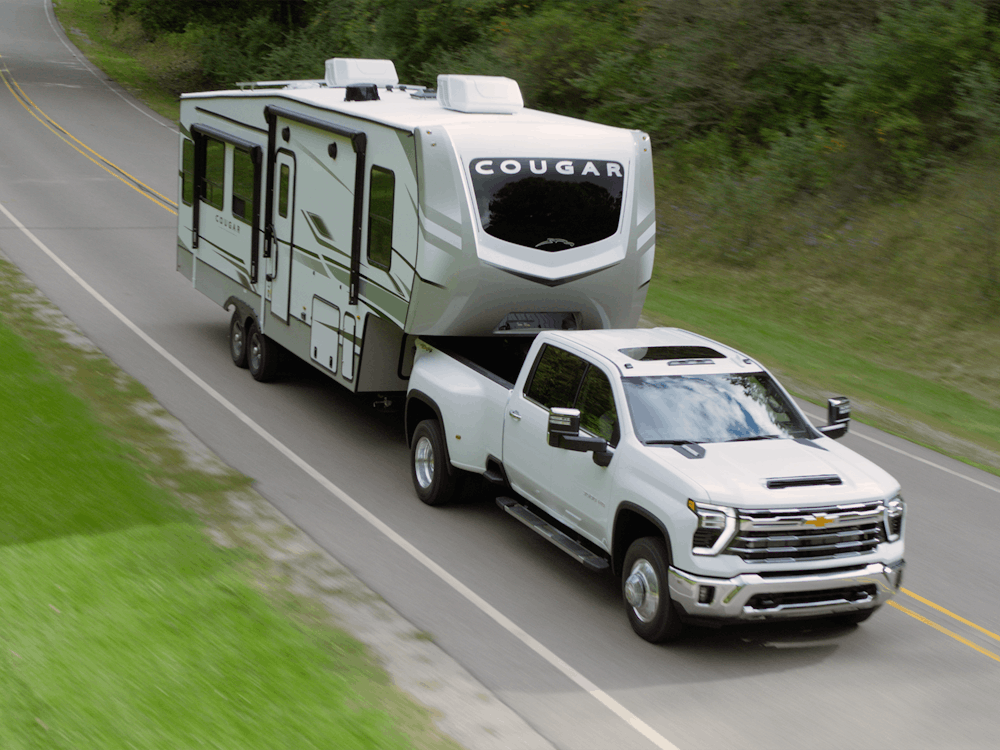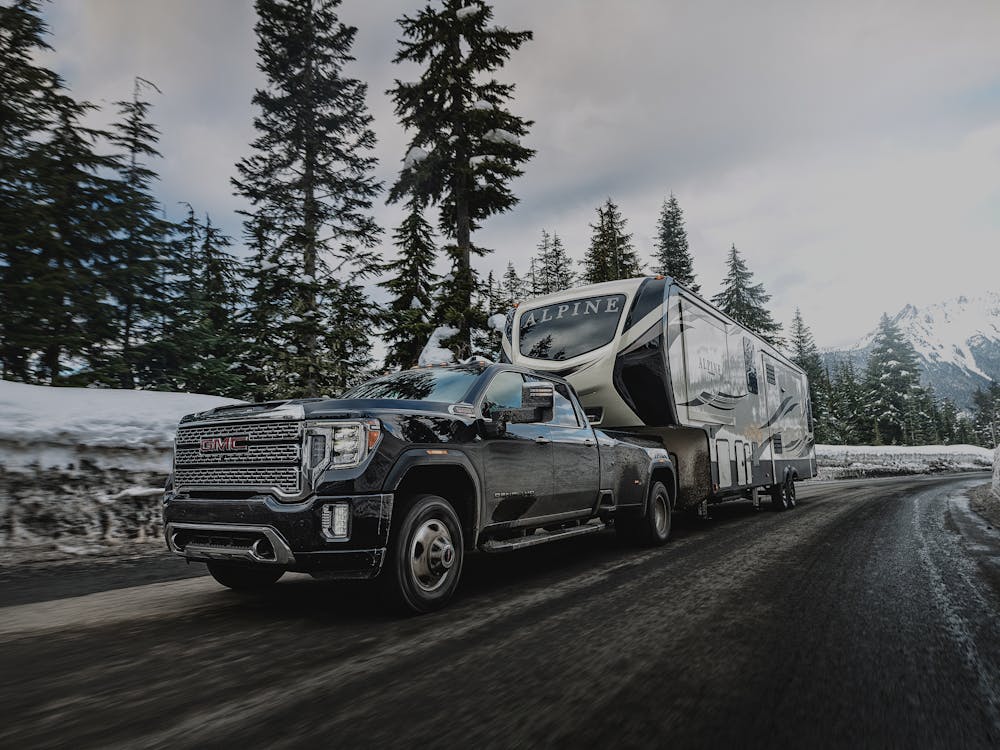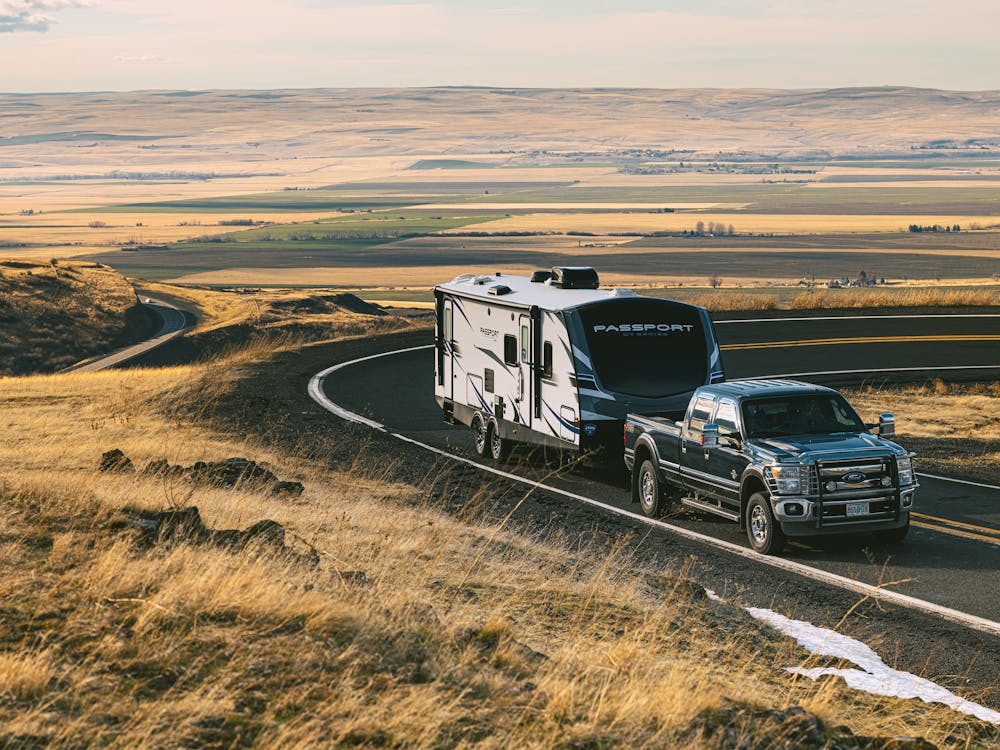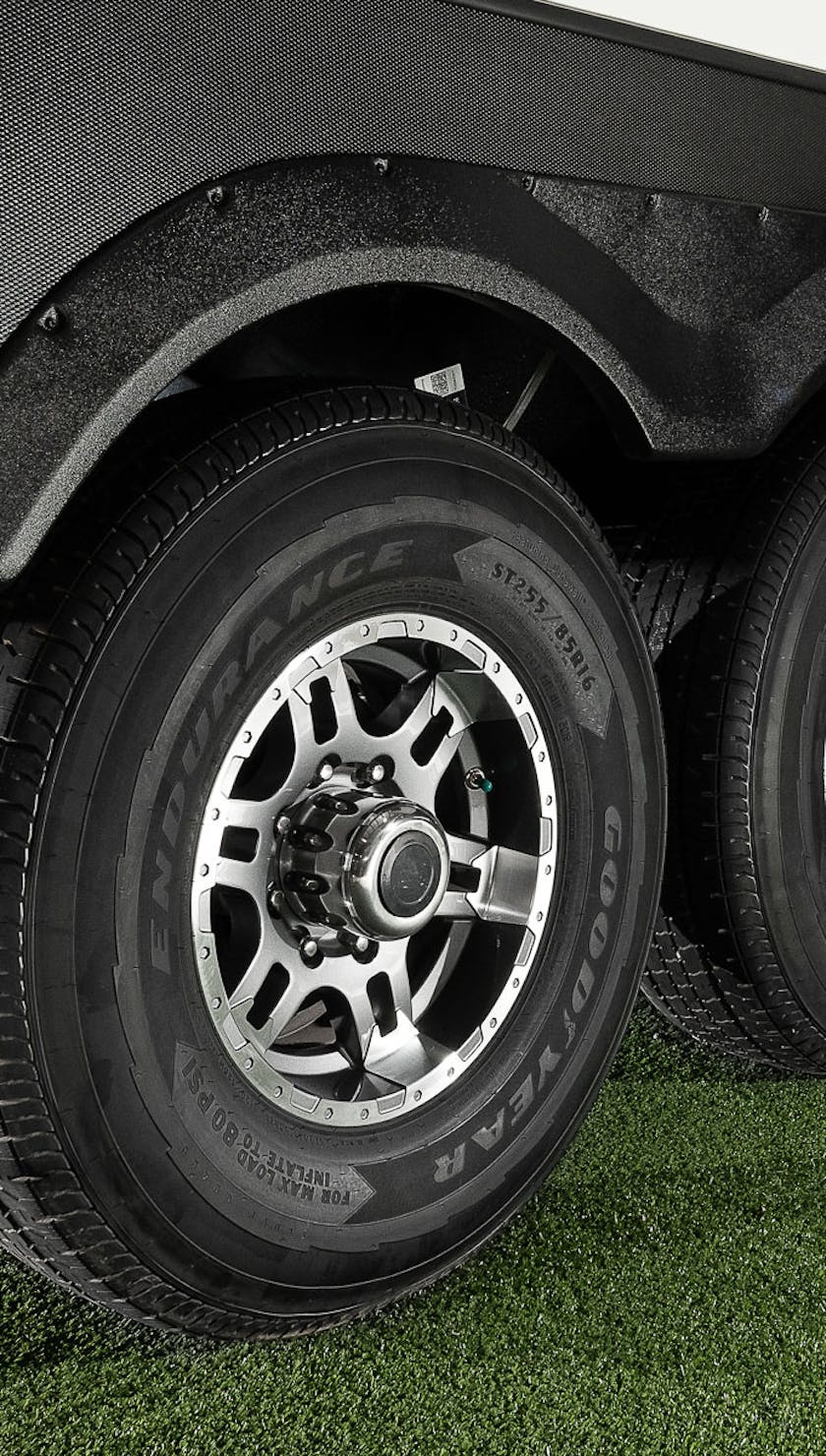Nothing puts a damper on an adventure faster than a tire blowout. Your Keystone RV is built for the long haul, but your journey is only as smooth as the tires beneath you. Proper tire care isn’t just about extending the life of your tires—it’s about keeping you, your passengers, and your home-on-wheels safe.
From understanding tire pressure and wear to decoding those mysterious numbers on your sidewall, we’re breaking down everything you need to know about RV tire safety. Whether you're gearing up for a weekend getaway or a cross-country expedition, these essential tips will help keep your travels worry-free and your Keystone rolling strong.
How to Read a Tire Label
Ever wonder what those numbers and letters on your tire mean? Understanding them can help ensure you're using the correct tires for your Keystone RV.
A typical tire label looks like this: ST235/80R16 123/119L
Here’s what each part means:
- ST – Stands for “Special Trailer” and indicates the tire is designed for trailers, not passenger vehicles.
- 235 – The tire’s width in millimeters from sidewall to sidewall.
- 80 – Aspect ratio, which is the height of the sidewall as a percentage of the tire’s width. In this case, the height is 80% of 235mm.
- R – Radial construction, the most common type for RVs.
- 16 – Wheel diameter in inches, meaning this tire fits a 16-inch wheel.
- 123/119 – Load index, indicating the maximum weight the tire can safely carry. Always match or exceed your RV’s requirements.
- L – Speed rating, meaning the maximum speed the tire is designed to handle.
Pro Tip: Your Keystone RV's recommended tire specifications are listed in your owner's manual and on the Vehicle Certification Label inside your unit. Always refer to this information when replacing or upgrading your tires.



Tire Pressure: Your First Line of Defense
Maintaining the correct tire pressure is crucial for safe towing and optimal tire performance. Underinflated tires generate excessive heat, leading to premature wear or even failure, while overinflated tires can reduce traction and cause uneven tread wear.
How to Check Your Tire Pressure:
- Always measure tire pressure when the tires are cold (before travel).
- Use a high-quality tire pressure gauge for accuracy.
- Refer to the tire pressure chart in your owner’s manual for the correct PSI recommendations.
- Check your tire pressure before each trip and adjust as needed.
Tire Wear & Inspection: Spotting the Signs
Routine tire inspections can prevent costly and dangerous issues down the road. Before every trip, inspect your tires for:
- Uneven tread wear
- Cracks or bulges on the sidewall
- Embedded objects like nails or screws
- Any signs of dry rot or aging
If you notice excessive wear or damage, it’s time to replace your tires.
Weight Matters: Avoid Overloading
Your Keystone RV is designed to handle a specific weight limit. Overloading your rig puts excess stress on your tires, increasing the risk of a blowout. Always check your Gross Vehicle Weight Rating (GVWR) and ensure your cargo is distributed evenly.
Tire Rotation & Replacement
To extend the life of your tires:
- Rotate them regularly, following your owner’s manual guidelines.
- Store your RV on level ground and use tire covers when parked for long periods.
- Replace tires every 5–7 years, even if the tread looks fine, as rubber degrades over time.
Final Road-Ready Checklist
Before hitting the road, make sure:
- Tire pressure is at the recommended PSI
- All tires are free from visible damage
- Your load is within weight limits
- Lug nuts are properly torqued
By staying on top of tire maintenance, you’ll keep your Keystone RV rolling safely and smoothly, ensuring worry-free adventures wherever the road takes you.
Got a favorite road trip tip? Share it with us at IamKeystoneNation@KeystoneRV.com for a chance to be featured in a newsletter!
